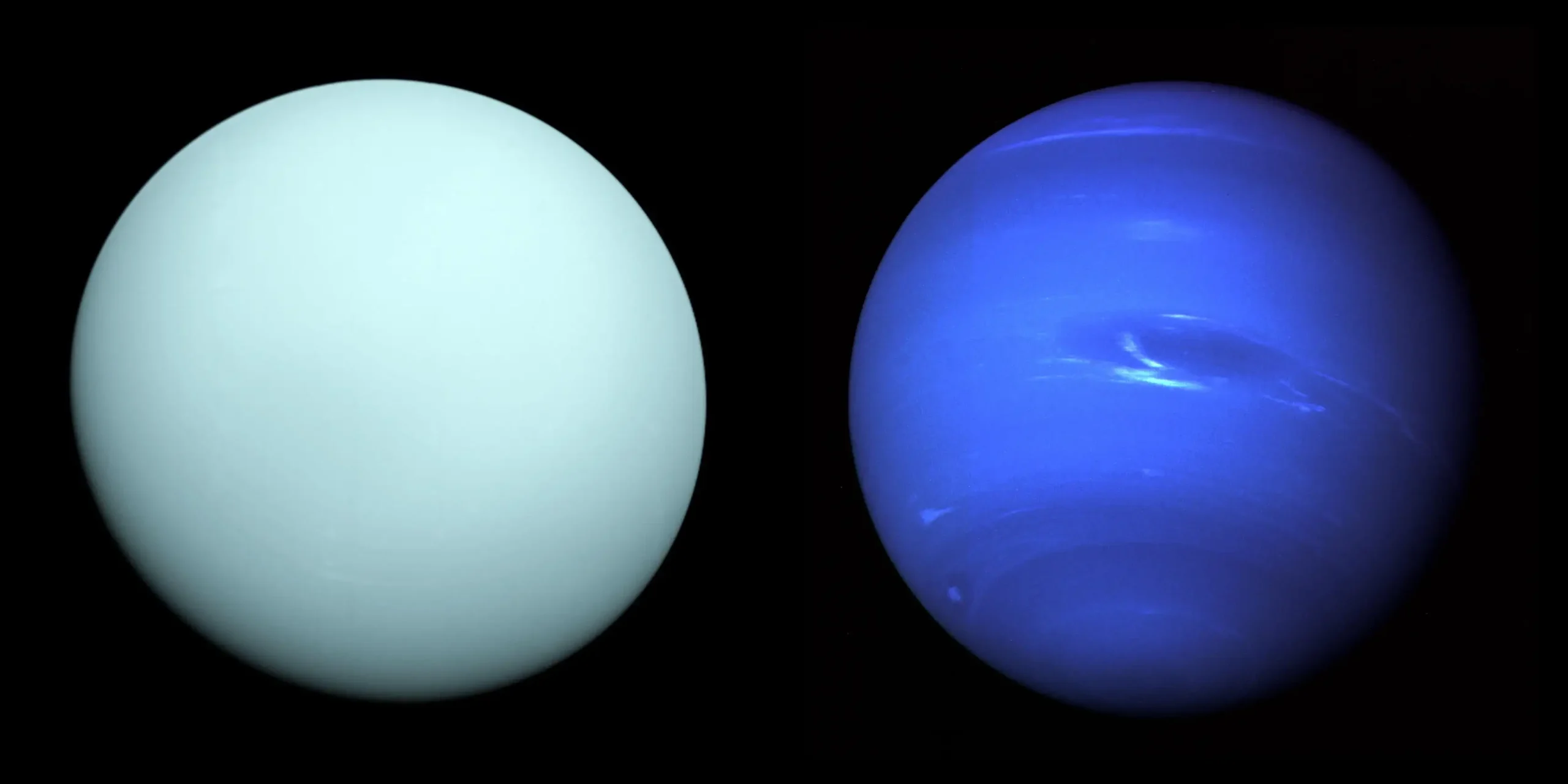Recent scientific research has provided new insights into the mysterious interiors of Uranus and Neptune, suggesting the presence of exotic oceans beneath their thick atmospheres. These findings indicate that both ice giants may harbor vast, high-pressure oceans composed of water, ammonia, and other volatiles, potentially with unique properties such as superionic phases and diamond precipitation. This article delves into the current understanding of these distant planetary oceans and their implications for planetary science.
Key Points at a Glance:
- Subsurface Oceans: Uranus and Neptune are believed to contain extensive subsurface oceans beneath their dense atmospheres, composed primarily of water, ammonia, and methane under extreme pressures and temperatures.
- Superionic Water: At certain depths, water molecules may dissociate into a superionic phase, where oxygen forms a solid lattice and hydrogen ions move freely, exhibiting both solid and liquid properties.
- Diamond Rain: High-pressure conditions within these planets may cause methane to decompose into carbon, forming diamond crystals that precipitate, creating a phenomenon often referred to as “diamond rain.”
- Magnetic Field Generation: The unique properties of these subsurface oceans, including ionic and superionic phases, are thought to contribute to the complex and irregular magnetic fields observed around Uranus and Neptune.
- Implications for Exoplanet Studies: Understanding the interior structures of Uranus and Neptune provides valuable insights into the composition and behavior of similar ice giant exoplanets, aiding in the study of planetary formation and evolution.
Uranus and Neptune, the seventh and eighth planets from the Sun respectively, have long intrigued scientists with their distinct blue hues and enigmatic compositions. Unlike the gas giants Jupiter and Saturn, which are predominantly composed of hydrogen and helium, Uranus and Neptune are classified as ice giants due to their substantial amounts of heavier elements, including water, ammonia, and methane.
Beneath their thick atmospheres, both planets are believed to harbor extensive subsurface oceans. These oceans are not akin to Earth’s oceans but are composed of hot, dense fluids under immense pressures and temperatures. In these extreme environments, water does not exist in a familiar liquid state but rather as a supercritical fluid—a phase that exhibits properties of both liquids and gases.
One of the most intriguing aspects of these subsurface oceans is the potential presence of superionic water. In this exotic phase, water molecules dissociate under high pressure, with oxygen atoms forming a solid lattice structure through which hydrogen ions can move freely. This state of matter exhibits characteristics of both solids and liquids and has significant implications for the thermal and electrical conductivity within the planets.
Another fascinating phenomenon hypothesized to occur within the interiors of Uranus and Neptune is the formation of diamonds. Under the extreme pressures and temperatures present in these planets, methane molecules may break down, releasing carbon atoms that crystallize into diamonds. These diamond crystals are thought to precipitate downward, creating a “diamond rain” that enriches the planetary cores with carbon. Laboratory experiments have provided evidence supporting this process, demonstrating diamond formation under conditions replicating those found in the deep interiors of ice giants.
The unique compositions and phases within the subsurface oceans of Uranus and Neptune are also believed to play a crucial role in generating their magnetic fields. Unlike Earth’s magnetic field, which is relatively aligned with its rotational axis, the magnetic fields of Uranus and Neptune are highly tilted and offset from their centers. This irregularity suggests that the dynamo mechanisms driving their magnetism operate differently, potentially influenced by the conductive properties of their ionic and superionic oceans.
Understanding the interior structures of Uranus and Neptune extends beyond our Solar System, offering valuable insights into the nature of exoplanets. Many discovered exoplanets are similar in size and composition to these ice giants. By studying Uranus and Neptune, scientists can develop models to infer the characteristics of distant worlds, enhancing our comprehension of planetary formation and the diversity of planetary systems in the galaxy.
In conclusion, the study of Uranus and Neptune’s subsurface oceans reveals a realm of extreme conditions and exotic phases of matter. From superionic water to diamond precipitation, these phenomena not only deepen our understanding of the ice giants themselves but also inform broader planetary science, including the study of exoplanets and the fundamental processes that shape planetary interiors.
